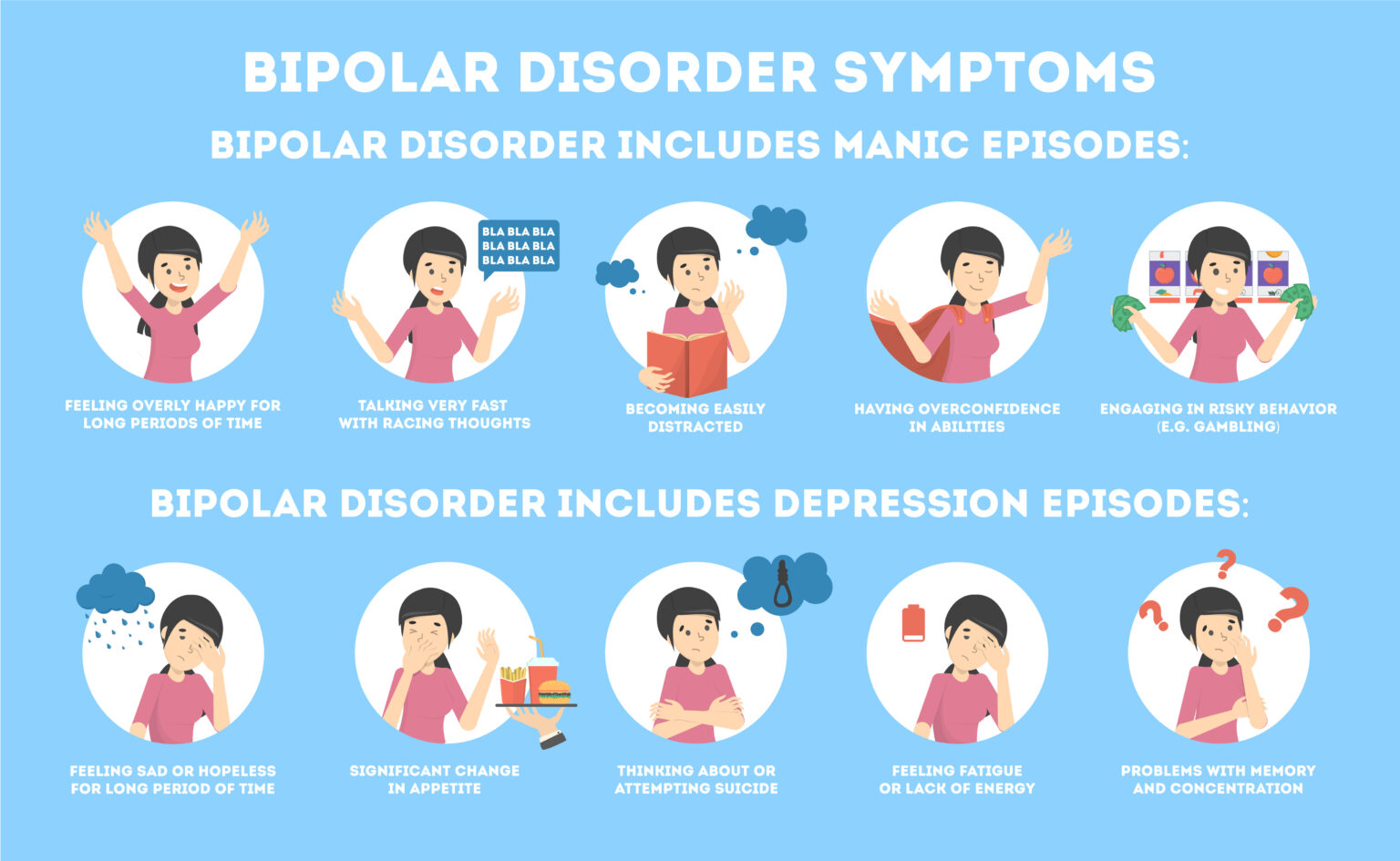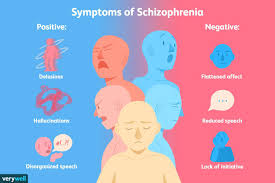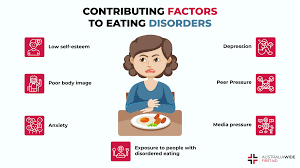
Table of Contents
Bipolar disorder, formerly known as manic-depressive illness, is a serious mental health condition that causes extreme mood swings ranging from emotional highs (mania or hypomania) to lows (depression). Unlike normal mood changes, these shifts are intense, last for days or weeks, and affect daily functioning.
Globally, about 45 million people suffer from bipolar disorder (WHO). If untreated, it can lead to disrupted relationships, job loss, risky behaviors, and even suicide. With proper treatment and awareness, however, many people with bipolar disorder live productive, fulfilling lives.
🔎 Causes / Risk Factors
The exact cause is unknown, but several factors increase risk:
- Genetics: Strong family history of bipolar or other mood disorders.
- Brain Chemistry Imbalance: Irregularities in neurotransmitters like serotonin, dopamine, and norepinephrine.
- Trauma or Stressful Events: Major life stress, abuse, or trauma can trigger episodes.
- Sleep Disruption: Lack of proper sleep often triggers manic or depressive episodes.
- Substance Abuse: Drugs or alcohol can worsen mood instability.
- Medical Conditions: Thyroid problems, neurological issues, or hormonal changes can contribute.
⚠ Common Issues / Symptoms
Bipolar disorder has two main phases — mania and depression — often alternating, with periods of stability in between.
🔴 Manic/Hypomanic Episode Symptoms
- Elevated or irritable mood.
- Increased energy, restlessness, or hyperactivity.
- Talking very fast, racing thoughts.
- Reduced need for sleep without feeling tired.
- Impulsive/risky behaviors (spending sprees, reckless driving, unsafe sex).
- Inflated self-esteem or grandiose ideas (“I can do anything”).
🔵 Depressive Episode Symptoms
- Persistent sadness or hopelessness.
- Loss of interest in normal activities.
- Fatigue and lack of energy.
- Sleep problems (too much or too little).
- Difficulty concentrating or making decisions.
- Thoughts of death or suicide.
👉 Episodes can last days, weeks, or months. The intensity and frequency vary by individual.
📊 Table 1: Myths vs Facts
| Myths | Facts |
|---|---|
| Bipolar disorder is just mood swings | It’s a serious medical illness with extreme, long-lasting episodes |
| People with bipolar can’t live normal lives | With treatment, many live healthy and successful lives |
| Mania means being happy | Mania often causes irritability, impulsivity, and dangerous behavior |
| Only adults get bipolar disorder | It can affect teens and young adults too |
| Medication alone is enough | Long-term care includes therapy, lifestyle changes, and support |
📋 Table 2: Do’s and Don’ts
| Do’s ✅ | Don’ts ❌ |
|---|---|
| Follow treatment plans (medication + therapy) | Stop medication suddenly without doctor’s advice |
| Maintain regular sleep patterns | Stay up late or disrupt routine sleep |
| Track mood changes with a journal or app | Ignore warning signs of episodes |
| Build a supportive network of family/friends | Isolate yourself completely |
| Practice stress management (meditation, exercise) | Depend on alcohol/drugs to cope |
🌱 Prevention / Awareness Tips
- Early Diagnosis: Recognizing symptoms early helps prevent severe episodes.
- Consistent Sleep: Regular sleep-wake cycles reduce mood swings.
- Avoid Triggers: Identify and avoid personal triggers like stress, alcohol, or lack of sleep.
- Routine Check-ups: Regular follow-up with psychiatrists for medication adjustments.
- Support Groups: Talking to others with bipolar disorder reduces isolation.
- Public Awareness: Reducing stigma encourages more people to seek help.
💊 Treatment / Care
Bipolar disorder is lifelong, but manageable with treatment:
- Medications: Mood stabilizers (Lithium, Valproate), antipsychotics, and antidepressants (only under supervision).
- Psychotherapy: Cognitive Behavioral Therapy (CBT), psychoeducation, and family therapy.
- Lifestyle Management: Sleep regulation, exercise, stress reduction.
- Crisis Management: In severe manic or suicidal cases, hospitalization may be required.
- Long-term Care: Continuous monitoring, not just short-term treatment.
📖 Case Study / Real-Life Example
A well-known example is Carrie Fisher (Star Wars actress), who openly shared her life with bipolar disorder. Despite challenges, she managed her condition with treatment and became a mental health advocate.
Closer home, in India, campaigns like “It’s Okay to Talk” have highlighted that people with bipolar disorder can study, work, marry, and live normal lives when given proper support and care.
❓ FAQs
Q1. Is bipolar disorder curable?
A1. No cure, but it is highly manageable with proper treatment.
Q2. Can stress trigger bipolar episodes?
A2. Yes, stress and lack of sleep often trigger manic or depressive episodes.
Q3. Can children develop bipolar disorder?
A3. Yes, though rare in very young children, it often begins in teenage or early adulthood.
Q4. Do people with bipolar disorder need lifelong medication?
A4. In most cases, yes. Stopping medication increases relapse risk.
Q5. Is bipolar disorder the same as depression?
A5. No. Depression is only one phase of bipolar disorder; the other phase is mania.
Q6. Can bipolar patients work and succeed?
A6. Absolutely. With treatment and support, many people excel in careers, arts, and business.
🏁 Conclusion
Bipolar disorder is a serious but treatable condition. Recognizing early signs, getting timely medical help, and maintaining lifestyle stability are key to managing it.
💡 Remember: Bipolar disorder does not define a person. With care, support, and awareness, people with bipolar disorder can lead inspiring, successful lives.


